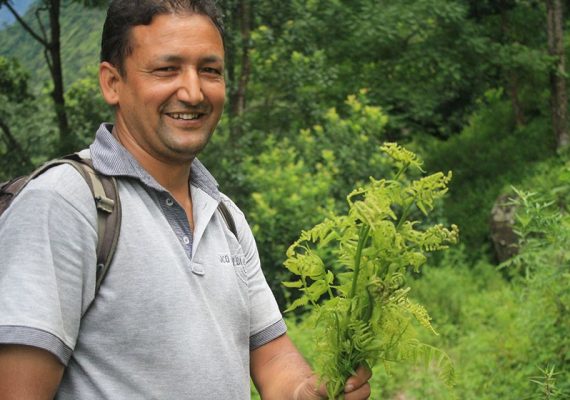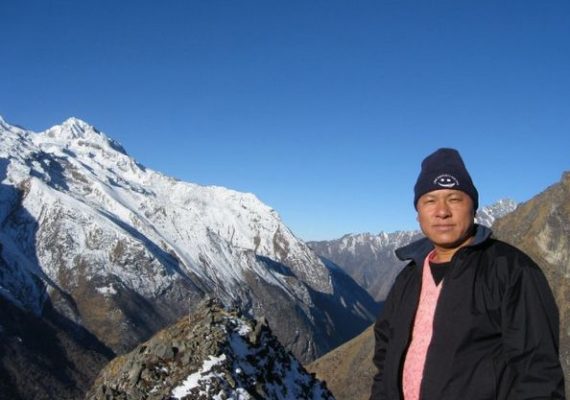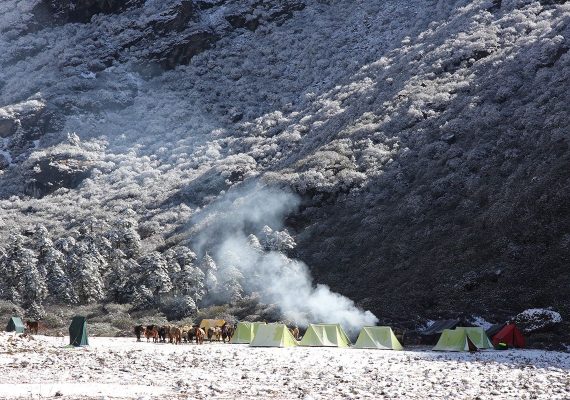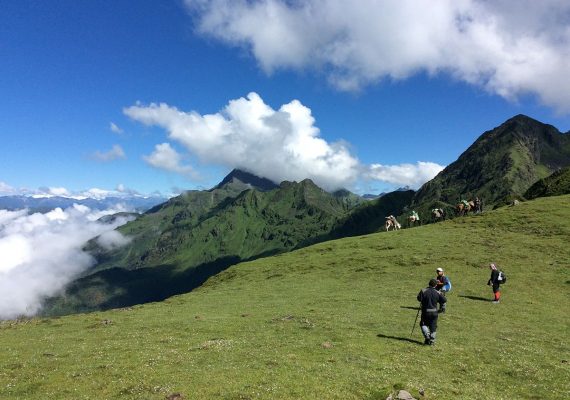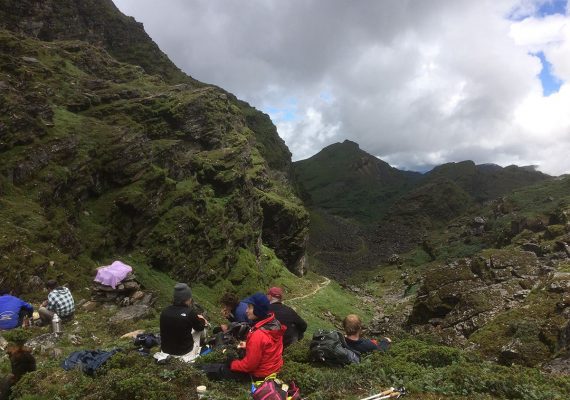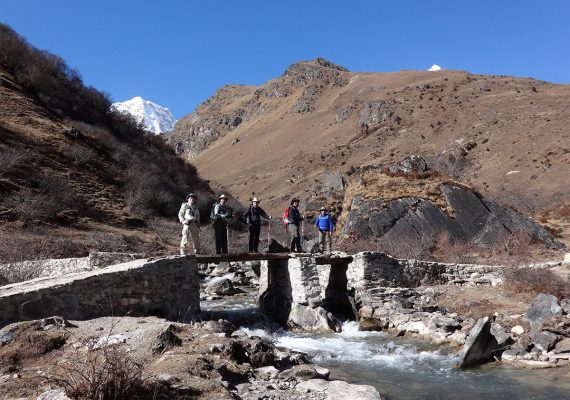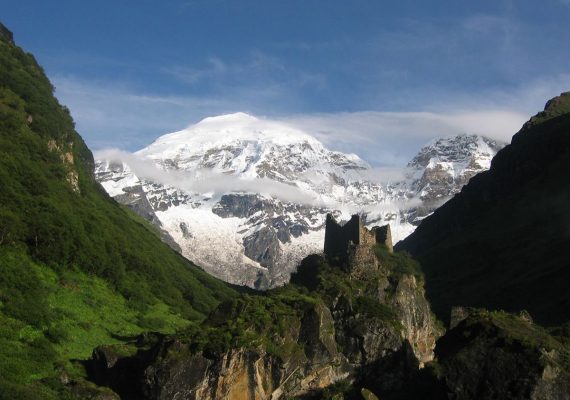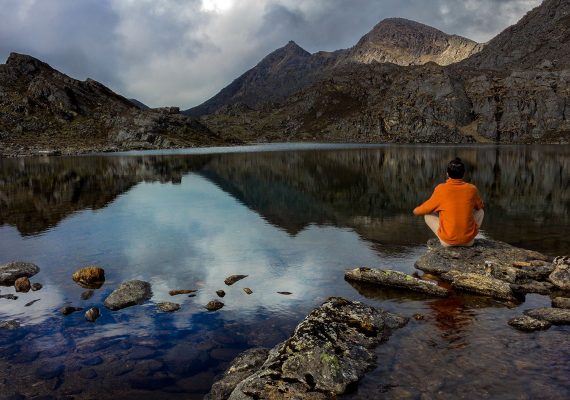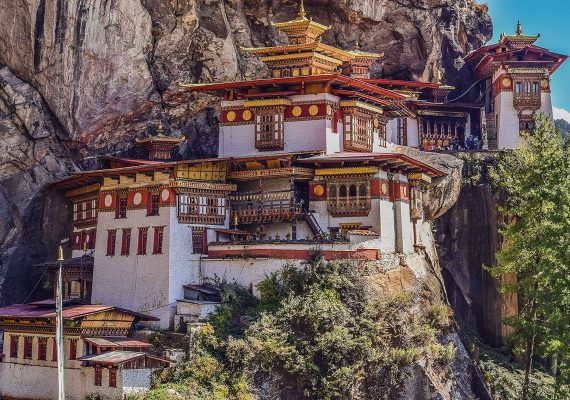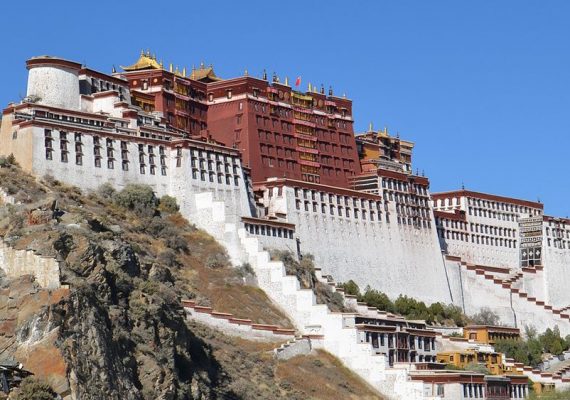Menu
Menu
Tour Details
The path from Shana ascends through the river valley with pine and rhododendron forests. On the way, there is a fantastic view of Mount Jomolhari. We will camp in a meadow with a stone shelter at an altitude of about 3860m…
Paro is situated in a beautiful valley at 2280 metres and is a fitting introduction to this charming kingdom. Your guide will meet you and take you to your hotel. There should be time for a quick stroll around Paro town before lunch. In the afternoon you can visit the impressive Paro Rinpung Dzong, one of the finest examples of Bhutanese architecture. You can also visit the National Museum. This was previously housed in the Ta Dzong (watch tower) built on top of the hill above Rinpung Dzong to defend Rinpung Dzong and the Paro valley during times of war, in an unusual circular construction resembling a conch shell. Unfortunately, an earthquake in September 2011 damaged the Ta Dzong and the contents of the museum were moved to a neighbouring building. You can still see a magnificent collection of Bhutanese artefacts – costumes, religious paintings, arms, textiles and a fascinating collection of Bhutan stamps. The National Museum is due to reopen in the Ta Dzong in 2018. Overnight in Paro.
Take a day walk to the ‘Tiger's Nest’, the sacred Taktshang monastery which clings to the rock face 900 metres above the valley floor. Guru Rinpoche is said to have flown to the site riding on a tigress. He subsequently meditated here for three months. It is one of Bhutan’s most holy sites and draws pilgrims not only from Bhutan but also from neighbouring Buddhist countries. You can have lunch at the Taktshang cafeteria from where you get a spectacular view of the monastery. Nearby you can also visit the 7th century Kyichu Lhakhang, a temple of historical significance and one of the most sacred shrines in Bhutan. Alternatively you may be interested to visit a manor house turned museum in a local village. The house dates from the 17th Century and the museum is designed to showcase the culture of medieval rural Bhutan. On the way back you can visit Dumtse Lhakhang, a temple built by Thangtong Gyalpo, the iron bridge builder. Overnight in Paro.
Please note: Originally, it was a 6-hour walk to the first day’s camp at Shana, but now a farm road has been built and the journey can be done by vehicle in a couple of hours. In theory it is possible to drive to the end of the farm road and hike to the second day’s camp at Soi Thangthangkha all in one day, but this creates difficulties, as there is then not sufficient time to acclimatise. Walking along the farm road is unappealing; so instead we recommend a second acclimatisation hike at Chele La near Paro, climbing high during the day to aid acclimatisation, then return to Paro. The next morning drive to the camp at Shana and start the hike from there giving you more time to adjust to the altitude before you climb towards base camp at Jangothang. This is our recommended approach to the start of the trek.
Today you can do a second acclimatisation hike. First drive about an hour and a half to Chele La pass at about 3900 metres where you will have a splendid view of the Himalaya range, weather permitting. From the road you can walk up the incline around 2 hours towards Gung Karpo La (4300m), continuing above the tree line along the ridge that divides Paro and Haa valleys. Here if the day is clear you will see even more breathtaking views of the snowcapped mountains, including Mount Jomolhari and other further peaks such as Kanchenjunga. Walk down the hill through rhododendron and hemlock forest towards Kila Gompa, a nunnery inhabited by about 30 nuns who live a life of contemplation and seclusion, with daily prayer and spiritual practice. The community is one of the oldest of seven nunneries in Bhutan and was initially established in the early 9th century as a meditation site. The main temple houses ancient statues of Chenrezig and Guru Rinpoche, among others. After visiting the nunnery you can return to the car, which takes around 15 minutes, and drive to Paro.
This evening you can sort out your luggage for the trek. Anything you don’t need to carry with you will be driven safely to Thimphu to await your arrival. Overnight in Paro.
Early in the morning drive about 2 hours through farm road to Shana, where you will start your trek. The path from Shana ascends through the river valley with pine and rhododendron forests. On the way, there is a fantastic view of Mount Jomolhari. We will camp in a meadow with a stone shelter at an altitude of about 3860 m. (19 km, 6 to 7 hours). Overnight in camp
AThe trail continues to follow the river and passes a small army post where the valley begins to widen again. Views of high ridges and snow-capped peaks can be seen on all sides. At this altitude (about 4040 m) it is possible to see yaks and yak herders. You can stop to visit a small local school at Soe, before reaching Jangothang. Camp is beneath a ruined fortress at the base of Mount Jomolhari. (19 km, 6 hours). Overnight in camp.
It’s possible to hike in various directions: towards Mount Jomolhari and its subsidiary to the west, Jichu Drake to the north and unclaimed summits and ridges to the east. Overnight in camp.
The trail leads north to the last settlement in the valley and drops to the Paro Chhu, crossing it on a wooden bridge. Switchback up the side of the hill to a large cirque and the lakes of Tshophu (4380m), which is inhabited by a flock of ruddy shelducks. Climb high above the eastern side of the lake, passing a second lake as the trail climbs across a scree slope to a crest. Descend into a hidden valley and climb steeply to Bhonte La at 4890m. From the pass the trail eventually switchbacks down to the Dhumzo Chhu and after you cross the river there is a short climb to a camp in a meadow at Chora at 3800m. (16 km, 7 to 8 hours). Overnight in camp.
The trail climbs 100m over a ridge, then drops to another stream. Crossing that stream, the trail heads up the hillside, dropping into a small side valley before emerging onto a ridge. Here the route turns south, ascending past a few huts to Takhung La (4520m). A short descent leads to Thombu Shong, with three yak herders’ huts. We camp at Thombu Shong at 4180m. (12 km, 6 to 7 hours). Overnight in camp.
Climb out of the valley to Thombu La at 4380, then drop gradually to about 4000m. The trail then makes a steep descent, switch-backing down the ridge, finally reaching the helipad at Gunitsawa (2730m) (13 km, 6 to 7 hours) from where your driver can meet you to return to Thimphu. Overnight in Thimphu.
We will visit the weekly market, the revered Memorial Chorten, the National Library and the School of Traditional Arts. You could visit Changangkha temple, perched on the hilltop overlooking the town. Devotees flock throughout the day to circumambulate and turn the prayer wheels. The temple also contains beautiful wall paintings and hundreds of religious scriptures written in gold. In the afternoon you can take in more of the sights and culture of the capital, with the option of a trip to Simtokha Dzong (one of the oldest fortresses in Bhutan, dating from 1629 AD). If you prefer to stay closer to town you could visit the huge statue of Buddha Dordenma, which commands a tremendous view of Thimphu valley. The huge 3-storey throne holds several chapels and the body itself is filled with 125,000 smaller statues of Buddha. You can also visit the Takin Reserve showcasing the unique national animal, the Takin, browse the striking collection of intricate textiles at the National Textile Museum or visit the Folk Heritage Museum. You may also like to visit the newly opened postal museum, detailing the history of Bhutan’s postal system and showcasing Bhutan’s rich assortment of interesting stamps. If you would like to view or buy Bhutanese handicrafts you may like to visit the new market opposite Taj Tashi hotel which has an array of stalls run by local handicraft shops selling purely home made articles with no imports. Tell your guide what takes your interest. Overnight in Thimphu.
This morning we drive around 4 hours to Thimphu, Bhutan’s capital, at 2320 metres. When you are ready to start your sightseeing you can visit the weekly market, the revered Memorial Chorten and then you may like to drive up to the Radio Tower (offering splendid views of the city from a hilltop festooned with prayer flags), visit the Takin Reserve showcasing the unique national animal, the Takin, and visit the nearby nunnery. Take a late afternoon walk around town and soak in the atmosphere of this magical capital with its busy shops and bazaars and photogenic citizens in national dress. You may also like to visit the newly opened postal museum, detailing the history of Bhutan’s postal system and showcasing Bhutan’s rich assortment of interesting stamps. You can also visit Tashicho Dzong, built in 1641, which housed the original National Assembly and is now home to Government offices, the throne room and offices of the King. Overnight in Thimphu.
